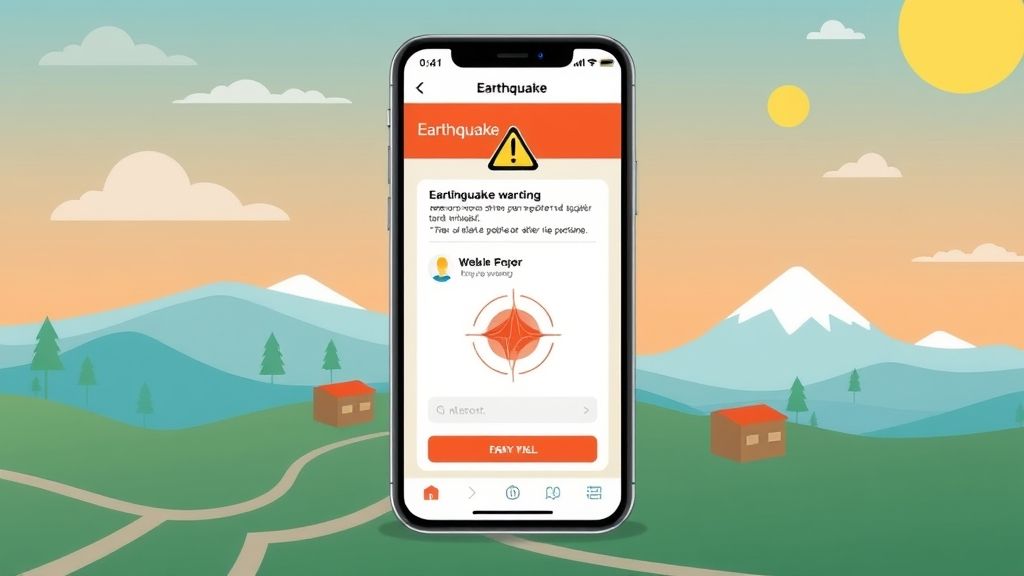Before any line of production code is written, system architects and developers must understand the logic behind complex systems—especially when lives depend on it. In this article, we’ll use pseudocode to design a web-based earthquake early warning system that integrates sensor data and public earthquake APIs.
This is not just theory. It’s how modern full-stack systems are scoped, architected, and translated into production-ready code in high-stakes environments. Pseudocode provides a clear, syntax-agnostic bridge from concept to code.
🧠 System Overview
- Goal: Alert users about seismic events in their region as early as possible.
- Data Sources:
- 📡 Local Sensor Feeds: Real-time seismic data from IoT devices.
- 🌐 Public Earthquake APIs: USGS, EMSC, or IRIS earthquake feeds.
- Alert Methods: Web notifications, push messages, email/SMS triggers.
📦 Components Breakdown
- 1. Sensor Listener — Real-time socket or MQTT-based listener for seismic sensors.
- 2. API Poller — Periodically fetch latest earthquake data from APIs (e.g., every 60 seconds).
- 3. Event Merger — Deduplicate and normalize incoming events into a unified queue.
- 4. Threshold Evaluator — Determine whether any events exceed risk thresholds.
- 5. Alert Dispatcher — Trigger and route notifications to users.
📝 Core Pseudocode
1. Sensor Input Listener
// Real-Time Seismic Sensor Input
FUNCTION startSensorListener()
CONNECT TO mqtt://local-sensor-network
ON data_received:
PARSE sensorData INTO event
CALL enqueueEvent(event, source="sensor")
END FUNCTION2. API Fetcher
// Earthquake API Fetch (e.g., USGS)
FUNCTION pollEarthquakeAPI()
LOOP EVERY 60 seconds:
data = HTTP GET "https://earthquake.usgs.gov/api/latest"
FOR EACH apiEvent IN data.events:
IF event.timestamp > lastProcessedTimestamp:
CALL enqueueEvent(apiEvent, source="api")
END IF
END FOR
END LOOP
END FUNCTION3. Event Queue + Deduplication
QUEUE eventQueue
FUNCTION enqueueEvent(event, source)
IF isDuplicate(event.id, event.timestamp) == FALSE:
ADD event TO eventQueue
END IF
END FUNCTION
FUNCTION isDuplicate(id, timestamp)
RETURN id IN processedIDs OR timestamp IN processedTimestamps
END FUNCTION4. Threshold Detection
// Evaluate Seismic Risk
FUNCTION monitorEvents()
LOOP FOREVER:
IF eventQueue IS NOT EMPTY:
event = DEQUEUE eventQueue
IF event.magnitude >= 5.0:
IF isInUserRegion(event.location):
CALL triggerAlert(event)
END IF
END IF
END IF
END LOOP
END FUNCTION5. Alert Dispatcher
// Alert Users in Risk Zone
FUNCTION triggerAlert(event)
LOG "Triggering alert for event " + event.id
SEND push_notification TO users_near(event.location)
SEND sms TO subscribers_near(event.location)
DISPLAY alert_modal ON web_dashboard
END FUNCTION📈 Optional Enhancements
- Geofencing Logic: Match user zones using latitude/longitude and radius.
- Machine Learning Layer: Predict aftershock probability based on incoming waveforms.
- Offline Mode: Cache last known data and display local alerts if offline.
- Admin Panel: Display event logs, recent activity, and manual override tools.
🎯 Why This Matters
In emergency applications, logic clarity is life-critical. Pseudocode offers a low-cost, high-clarity blueprint that can be reviewed, shared, and even discussed with non-devs (like disaster managers). It also accelerates team collaboration across frontend, backend, and IoT layers.
By separating structure from syntax, we gain confidence in the design before we ever write a line of code. That’s what makes pseudocode powerful—and why it belongs in every software project, from MVPs to mission-critical systems.
🔧 I plan to create the working code and share it on EarthScene.co. You can check there for the full implementation, real-time examples, and future updates.
✨ This article is part of the CodeOnTheWay.com Core Dev Notes series—designed to make you think before you code.
